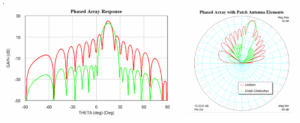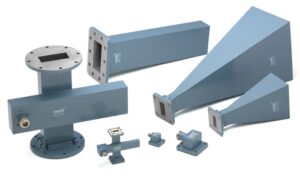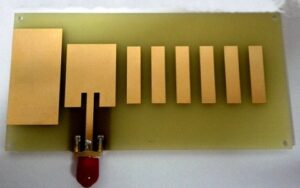Table of Contents
Increased Data Transmission Capacity
The Ka-band, operating between 26.5 GHz and 40 GHz, supports data rates of over 100 Mbps, allowing a single satellite to handle upwards of 1 Tbps of total capacity. This is a sharp contrast to C-band satellites (4–8 GHz), which typically provide a maximum throughput of 300–500 Mbps.
Ka-band satellites can provide broadband speeds that rival fiber connections in remote areas, with examples like a 1 GB file download taking less than 90 seconds at 100 Mbps. In contrast, older systems relying on L-band (1–2 GHz) frequencies struggle to achieve more than 1 Mbps, resulting in the same file taking hours to download.
A single Ku-band satellite (12–18 GHz) serving an aircraft can deliver in-flight internet speeds of 50 Mbps, enabling passengers to stream content, conduct video calls, and perform work tasks simultaneously. Comparatively, L-band systems used historically for aviation often capped out at 2 Mbps, barely enough for basic email and browsing.
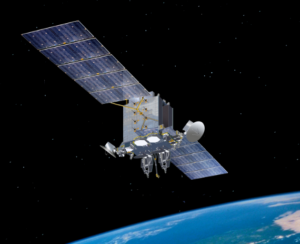
Minimized Interference
In particular, frequencies in the Ka-band 26.5–40 GHz are far less crowded than L-band 1–2 GHz, which is used very extensively for terrestrial communication systems, such as mobile phones, television and radio broadcasts.
While C-band satellites can make beams as wide as 1.5 degrees from 4-8 GHz of frequency, Ku-band satellites are capable of focusing their signal into beams as narrow as 0.2 degrees at 12-18 GHz. A tighter beam focus reduces the possibility of overlap with other adjacent satellite systems and enables the use of the same frequency in other geographical areas.
The generally expected source of interference, atmospheric noise, is much less a problem for high-frequency signals in general, under certain conditions. A typical Ka-band satellite link would increase the transmitted power by an amount equal to attenuation so that during hard rainfall, the signals still arrive strong. Such approaches have proved quite effective: data delivery reliability in most commercial systems already exceeds 99.9%.
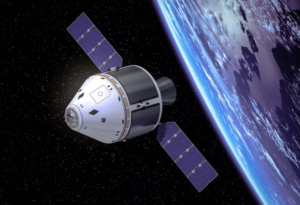
Smaller Antennas
The Ku-band signal, within the range of 12–18 GHz, requires an antenna size of about 60–90 cm for its effective transmission and reception. In contrast, a C-band signal, ranging from 4 to 8 GHz, would normally require a much bigger antenna, usually in diameters between 1.8 and 3.7 meters.
This advantage is even more significant within the Ka-band at 26.5–40 GHz, whose shorter wavelengths allow the use of antennas of up to 30–45 cm in size. In other words, an airline which equips its fleet with Ka-band antennas saves up to 50% in weight over Ku-band systems-meaning fuel economy and lower operation costs.
Indeed, ships using conventional C-band antennas usually have installations well over 2 meters in diameter, mostly cumbersome to maintain and accommodate into vessel designs. Systems like Ku-band and Ka-band have high frequencies with small antennas of just about 45–60 cm, sleeker in deployment and management.
A typical commercial Ku-band satellite dish costs in the range of $100–200, while its equivalent in C-band would be more than $500 because of its larger, more complex design.

Better Bandwidth Availability
That is, the Ka-band, from 26.5 to 40 GHz, offers up to 4 GHz bandwidth per transponder, while older C-band was between 4 and 8 GHz, which can offer up to 500 MHz or 1 GHz maximum. This tenfold increase in available bandwidth allows Ka-band satellites to handle multiple high-data-rate applications simultaneously-including streaming, telemedicine, and video conferencing-without degradation of signals.
A typical Ka-band satellite can provide aggregate data throughput in excess of 1 Tbps to support millions of concurrent users over various regions. On the other hand, C-band satellites, with even multiple transponders onboard, are restricted to a few hundred Gbps in total capacity.
A single Ka-band satellite with 100 spot beams can effectively increase its capacity by a factor of 10 compared to a satellite using broad beams.The Ka-band utilizes a satellite internet service provider for rural downloads, at speeds of up to 100 Mbps in areas where terrestrial infrastructure generally is not available. For comparison, the L-band systems operate at a frequency of 1–2 GHz and are limited bandwidth, supporting only 1–2 Mbps speed-very inadequate for use on modern internet.
Higher Resolution in Imaging
X-band frequencies (8-12 GHz) are highly used in radar imaging satellites and can achieve resolutions as fine as 1 meter, while the lower frequencies, such as L-band (1-2 GHz), have resolutions of 10-30 meters.
Ka-band radar imaging (26.5-40 GHz) can resolve features as small as 0.5 meters and hence find applications in monitoring critical infrastructure such as bridges and pipelines.
High-frequency SAR satellites operating in the X-band can produce full-resolution images of a target area in minutes, which enables near-real-time monitoring. Such systems are able to provide very accurate flood extent maps every few hours during flooding.
High-resolution imaging at higher frequencies also enriches scientific research. Satellites operating on W-band frequencies, between 75–110 GHz, are able to detect atmospheric particles and cloud structures with unprecedented detail that underpins advanced climate modeling and weather prediction.
Improved Spectrum Efficiency
It allows Ka-band satellites, 26.5–40 GHz, to employ superior modulation techniques such as 256-QAM that offers an 8 bit per symbol transmission capability, whereas most of the older generation C-band systems still operate between 4–8 GHz with relatively inferior modulation techniques, including QPSK that transmits only 2 bits per symbol.
A state-of-the-art Ka-band satellite, with 100 spot beams, might reuse its frequencies up to 20 times, which corresponds to multiplying its total capacity by 20. In contrast, conventional C-band satellites use wide beams and can achieve only very limited frequency reuse, resulting in much lower overall capacity.
Satellites operating in the Ku-band-a 12-18 GHz range-can support internet connectivity, television broadcasting, and data relay for IoT devices all at the same time without interference. That capability enables a single Ku-band satellite to serve hundreds of thousands of users, whereas older L-band systems with bandwidths of only 1-2 GHz can support but a fraction of that user base.
The cost per bit transmitted for a Ka-band satellite network, with better spectrum management, can be up to 50% less than that of equivalent C-band systems. For instance, numerous Ka-band broadband schemes assure speeds of 50 to 100 Mbps and are offered at a low enough ground-based price that, henceforth, most are considered appropriate for remote and under-infrastructured areas.
Enhanced Security
Where a Ka-band signal might be as narrow as 0.2 degrees, it focuses a 26.5–40 GHz signal, greatly limiting the exposure to other-than-intended recipients. In contrast, the C-band signals require a wider beam; this greatly increases the possibility of signal leakage and unauthorized access in the range of 4-8 GHz.
The increased data capacity of both the Ka-band and Ku-band systems, 12–18 GHz, allows for the use of robust encryption protocols, such as AES-256, which require high processing power. The satellite system operating in the Ka-band can manage encrypted data streams at rates more than 100 Mbps to enable secure communication without a trade-off in speed.
Due to the smaller size, Ka-band and Ku-band signals are more difficult to find and jam than those with lower frequencies, like L-band signals at 1–2 GHz. For example, a Ka-band system using frequency hopping can avoid interference with success rates in excess of 95%, thus permitting dependable and secure communications in contested environments. Satellite-based payment systems rely on secure high-frequency links to process millions of transactions every day with error rates less than 0.001%.

